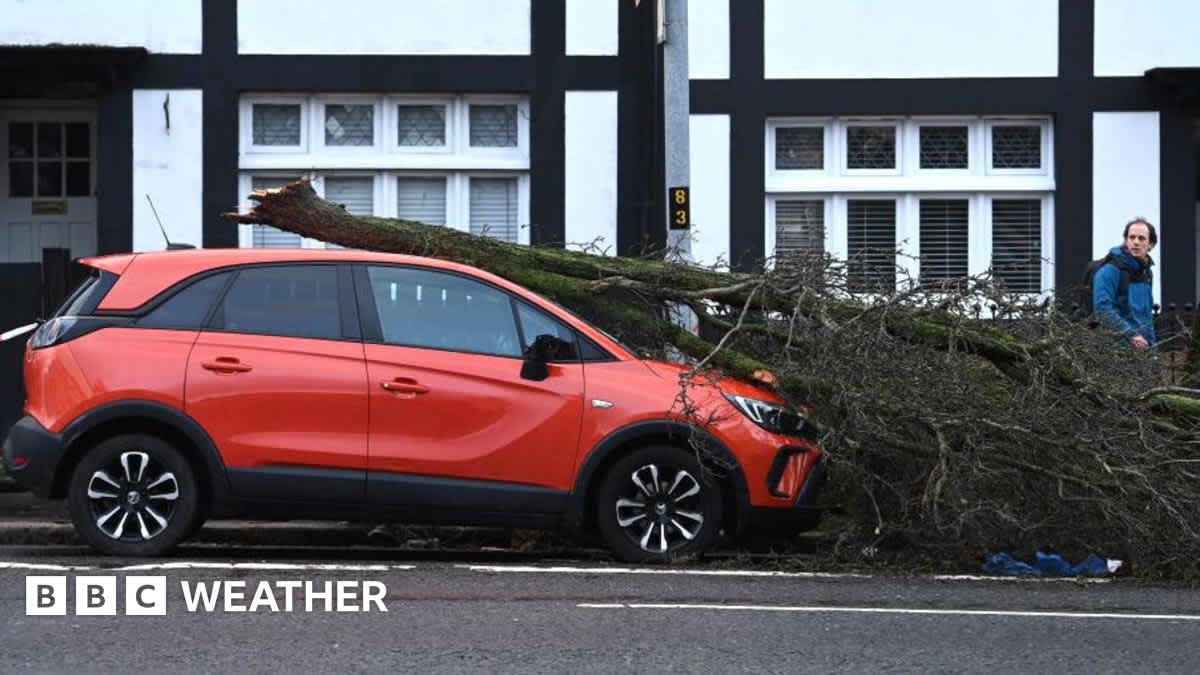Although the world is on track to experience its warmest year on record in 2024, surpassing the symbolic 1.5°C threshold set in the Paris Agreement, it didn’t feel that way in the UK which mostly escaped the extreme heat seen in recent years.
However, signs of a changing climate were evident in other records and the year still had some memorable weather. Here are five of the biggest talking points.
The 2023/24 storm season saw 12 named storms, the greatest number of named storms since the first season in 2015/16
Storm Henk battered the UK in early January, followed by Storms Isha and Jocelyn arriving three weeks later.
Isha was the most significant windstorm to impact the UK since Storm Eunice in February 2022. Widespread damage on 21–22 January left hundreds of thousands without power across Ireland and the UK, with flights cancelled and train services disrupted nationwide from Scotland to London.
The Met Office issued a rare red warning for wind in parts of north-east Scotland and gusts peaked at 99mph (159km/h) in Northumberland, while extensive amber warnings covered more than half of the UK.
Aside from the stormy weather and despite occasional cold spells, a new UK January maximum temperature record of 19.9C was set in Achfary, Sutherland at the end of the month.
The trend in the UK is for less frost in winter
The UK’s temperature in February was 2.2C above the climate average, making it the second warmest February since 1884, behind 1998, but the warmest on record for England and Wales.
Despite a brief cold spell in northern parts of the UK early in the month, it was one of the least frosty winters on record. Southern England also saw its wettest February, with rainfall reaching 239% of the average.
These patterns align with long-term warming trends in the UK’s climate, where a warmer climate is associated with more frequent spells of wet weather.
Londoners were treated to a rare glimpse of the Northern Lights, a stunning display that managed to shine through the city’s usual light pollution
Despite changeable conditions, the UK recorded its warmest May on record, with temperatures 2.4C above average – surpassing the previous 2008 record by a full degree.
A brief spell of clear weather this month was particularly well-timed and coincided with the the most widespread aurora display across the UK and many parts of the northern hemisphere since 2003.
Sky watchers across the nation were captivated as the aurora shone brightly, even piercing through London’s intense light pollution.
However, after a mild May, many were reaching for jackets just as summer seemed imminent. A blast of cold northerly winds carrying Arctic air brought an unseasonably chilly start to June, with temperatures 2C below average – a reminder that occasional cold spells can still occur, even as our climate continues to warm.
Why the aurora dazzled us this year and what 2025 has in store
Northern Lights shimmer over UK in stunning photos
Rare Steve phenomenon and Northern Lights dazzle in UK skies
Beachgoers enjoyed the weather on the warmest day of the year at Southend-on-Sea in Essex
Summer 2024 was the UK’s coolest since 2015.
Mean temperatures in June and July were slightly below average across the UK, driven by a south-shifted jet stream that brought northerly winds carrying Arctic air.
August saw warmer conditions but it was also the wettest of the three summer months, though with significant regional variation.
Despite this, brief spells of heat occurred in parts of the UK, with the summer’s highest temperature of 34.8C recorded in Cambridge on 22 August.
Residents of Pontypridd in Rhondda Cynon Taf were forced to bail water to protect properties during a severe flood
The end of November was marked by a brief but significant cold snap, delivering the season’s first notable snowfall to parts of the UK, from Scotland to Devon.
Temperatures dropped below -10C in some areas of northern Scotland, including Braemar in Aberdeenshire, which recorded a low of -11.2C, the coldest November night since 1998.
Shortly after, the weather turned extremely wet and windy as Storm Bert brought its most severe impacts to South Wales. The River Taff burst its banks in Pontypridd, causing severe flooding, with more than 150mm (6in) recorded between 23–24 November.
Less than two weeks later, Storm Darragh arrived, bringing widespread damage and disruption. The Met Office issued a rare red warning for wind ahead of the storm.
Land gales battered much of UK with winds exceeded 90mph (145km/h) along the Welsh and Devon coasts. At one point, 200,000 homes across the UK lost power, according to the Energy Networks Association.
As 2024 draws to a close and we move into 2025, the weather remains unsettled, with some potentially wet and volatile conditions likely to cause disruption.
Deadliest, most intense, windiest: Three of the UK’s worst storms
Storm names 2024-25: How do storms like Darragh get their names?
UK weather warnings: What you need to know
Source: www.bbc.com
